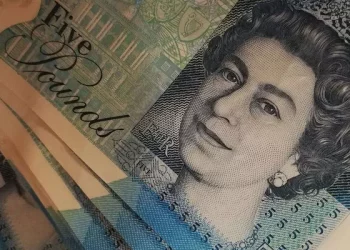The Indian Rupee (INR) edged lower on Thursday, despite a decline in the US Dollar (USD). Recent data revealed that India’s manufacturing sector growth eased slightly in July, driven by softer increases in new orders and output. Concurrently, cost pressures and robust demand led to the steepest rise in selling prices since October 2013. Despite ongoing growth in the manufacturing sector, the INR struggled to gain ground.
Market Dynamics Affecting INR
Several factors contributed to the INR’s weakness. Significant outflows from Indian equities, persistent USD demand from importers, and fluctuations in the Chinese Yuan are expected to cap the INR’s upside in the near term. Additionally, rising crude oil prices, spurred by geopolitical tensions in the Middle East, are likely to weigh on the local currency. As the world’s third-largest oil consumer, India is particularly vulnerable to oil price hikes.
US Federal Reserve’s Dovish Stance
The US Federal Reserve (Fed) maintained its interest rates in the 5.25%-5.50% range for the eighth consecutive time at its July meeting. Fed Chair Jerome Powell’s dovish remarks post-meeting could broadly undermine the Greenback. Powell indicated that the first interest rate cut could occur as soon as September, contingent on favorable economic data. Futures traders now see a 100% probability of a 25 basis point rate cut in September, according to the CME FedWatch Tool.
Economic Indicators and Projections
Traders are closely monitoring upcoming US economic data, including the ISM Manufacturing PMI, weekly Initial Jobless Claims, and the final S&P Global Manufacturing PMI, due later on Thursday. These reports may provide further insights into the Fed’s interest rate trajectory.
In India, the HSBC Manufacturing Purchasing Managers Index (PMI) slightly declined to 58.1 in July from 58.3, below the market consensus of 59.0. “India’s headline manufacturing PMI showed a marginal slowdown in July, but with most components remaining robust, the small drop is no cause for concern,” said Pranjul Bhandari, Chief India Economist at HSBC.
India’s Ratings and Research (Ind-Ra) raised its economic growth projection for the current fiscal year to 7.5%, up from 7.1%. This revised forecast is higher than estimates from the Reserve Bank of India (7.2%), the Economic Survey (6.5% to 7%), and the International Monetary Fund (7%).
Technical Analysis: USD/INR Outlook
The USD/INR pair remains bullish in the longer term. The pair is holding around the key 100-day Exponential Moving Average (EMA) and is supported by an uptrend line since June 3. The 14-day Relative Strength Index (RSI) stands near 58.40, suggesting potential upside.
Immediate resistance is at the all-time high of 83.85. A break above this level could drive the price to the psychological level of 84.00. Conversely, initial support is at the uptrend line around 83.70. A break below this level would signal further selling pressure toward 83.51, the low of July 12, with extended losses potentially reaching 83.45, the 100-day EMA.
Related Topics:


























